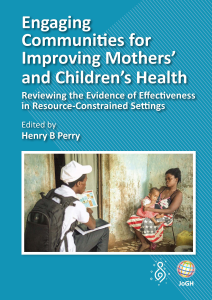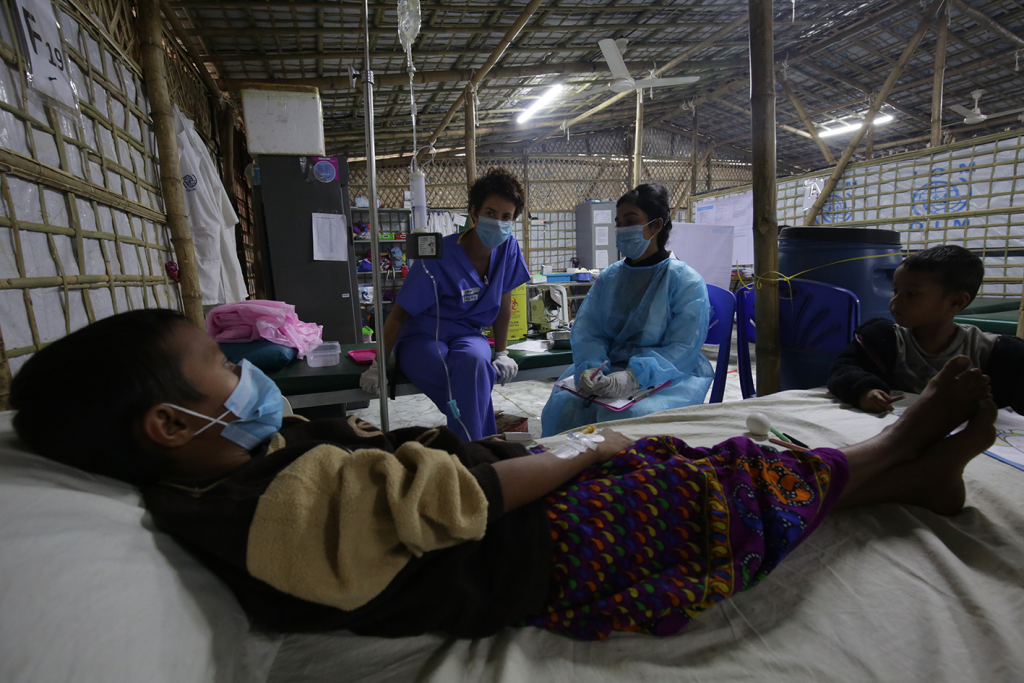Fragile, conflict-affected and vulnerable settings (FCV) encompass a variety of situations including humanitarian crises, conflict, extreme adversity, services disruption and immediate or protracted emergencies [1]. Approximately 2 billion people live in FCV settings and estimates suggest that by 2030, nearly two-thirds of the world’s extreme poor could reside in these contexts [2-4]. The majority of FCV settings are within low- and middle-income countries and patient safety incidents in these countries account for an estimated 134 million adverse events and 2.5 million deaths annually [4].
FCV settings pose significant and unique risks for patient safety. Several studies have noted that conflict degrades public and population health, both outside the immediate area and in the subsequent post-war period, disproportionately affecting vulnerable groups [4,5]. Recent estimates suggest a large proportion of the total number of preventable deaths take place in FCV settings, including 60% of preventable maternal deaths, 53% of deaths in children under five years, and 45% of neonatal deaths [3]. Although the emphasis has been on providing universal health coverage, urgent and essential action is needed to ensure this care is also high quality and safe to provide better health outcomes. However, there is limited evidence on the effectiveness and impact of interventions to improve the safety landscape in FCV settings. This gap in knowledge hinders an adequate appraisal of existing interventions, their accessibility and effectiveness, their suitability to context-specific challenges and, importantly, their impact supporting local communities to sustainably improve safety of care [6].
A particular limitation when evaluating the effectiveness and impact of safety interventions in FCV settings is the scarcity of research on the topic, contrasting with the growing impact across both HICs and LMICs, with the COVID-19 pandemic set to exacerbate and increase fragility on a global scale [7]. The low number of studies published reflects the need for more work on this subject; therefore, it is critical to raise awareness on the importance of research in this specific area, and create opportunities for funding to evaluate safety interventions. Without a robust body of applied research to evaluate solutions and, importantly, which are the main facilitators to their delivery, healthcare systems will not be able to identify best practice and share learnings to improve quality and safety of care in FCV settings. Research and evaluation processes should also acknowledge the important variability between FCV settings (ie, different abilities to reach and support vulnerable citizens, either by local circumstances, study design, or political support), and within FCV settings (ie, the same intervention can impact groups of people differently, in the same setting) [6]. Action is now required across health systems to support these communities in the provision of safe and effective healthcare.
The low volume of the literature may also reflect that the work performed might not be appropriately captured in academic publications and formal evaluations. Strategic and effective collaborations are needed between academic organisations and other key stakeholders in FCV settings including providers, decision-makers, service users and frontline workers, in order to encourage the formal evaluation of the available solutions, and facilitate the sharing of best practice via peer-reviewed publication. There is a clear role for global organisations to play in facilitating and leading on these objectives. Harnessing the expertise and power of global organisations such as World Health Organisation, the World Bank and Organisation for Economic Co-Operation and Development, alongside gaining energy from the G20 nations and the philanthropic community such as the International Society for Quality in Health Care and the Gates Foundation, has the potential to foster collaborations and multidisciplinary partnerships. These have a critical role to play advising on the development of research agendas, identification of research priorities and in defining how impact can be measured [3,8].
With FCV settings rapidly expanding around the world, applied research on patient safety is now essential to evaluate effectiveness and translate best practice into practical interventions and policy making. Despite limited evidence on the effectiveness of safety interventions in FCVs settings, there is cause for optimism. More recently, there have been examples of promising initiatives from which the global health community can learn, particularly in programmes to strengthen infection prevention control, through the implementation and evaluation of healthcare workers training and provision of equipment during the Ebola virus outbreak, and evaluation of the WHO Hand Hygiene tool in Kosovo [9,10]. We must now work collaboratively to learn from these first initiatives and take action to develop the body of evidence to establish resilient, effective and safe care in FCV settings.















